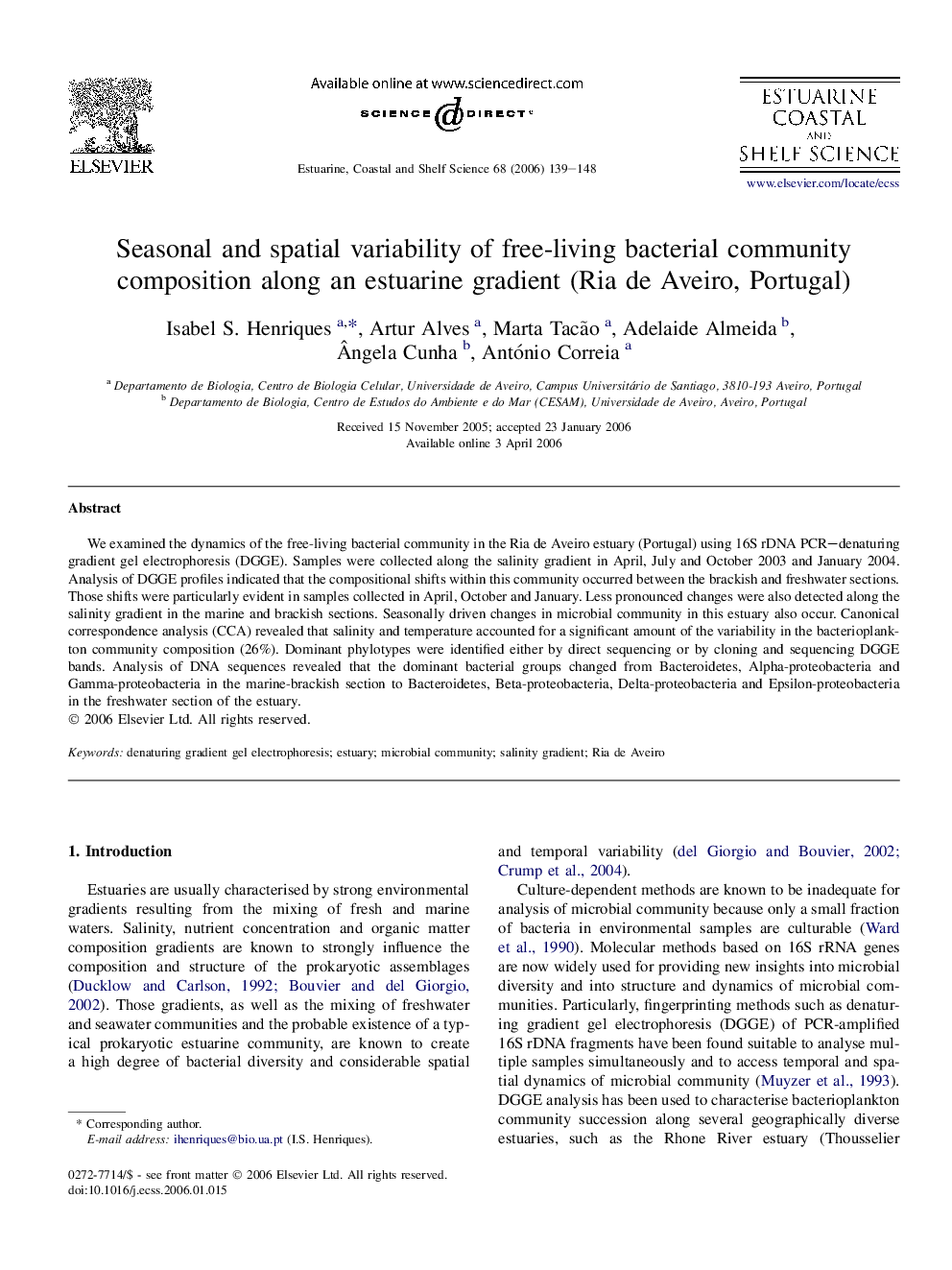| Article ID | Journal | Published Year | Pages | File Type |
|---|---|---|---|---|
| 4542290 | Estuarine, Coastal and Shelf Science | 2006 | 10 Pages |
We examined the dynamics of the free-living bacterial community in the Ria de Aveiro estuary (Portugal) using 16S rDNA PCR–denaturing gradient gel electrophoresis (DGGE). Samples were collected along the salinity gradient in April, July and October 2003 and January 2004. Analysis of DGGE profiles indicated that the compositional shifts within this community occurred between the brackish and freshwater sections. Those shifts were particularly evident in samples collected in April, October and January. Less pronounced changes were also detected along the salinity gradient in the marine and brackish sections. Seasonally driven changes in microbial community in this estuary also occur. Canonical correspondence analysis (CCA) revealed that salinity and temperature accounted for a significant amount of the variability in the bacterioplankton community composition (26%). Dominant phylotypes were identified either by direct sequencing or by cloning and sequencing DGGE bands. Analysis of DNA sequences revealed that the dominant bacterial groups changed from Bacteroidetes, Alpha-proteobacteria and Gamma-proteobacteria in the marine-brackish section to Bacteroidetes, Beta-proteobacteria, Delta-proteobacteria and Epsilon-proteobacteria in the freshwater section of the estuary.
